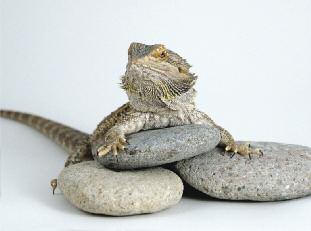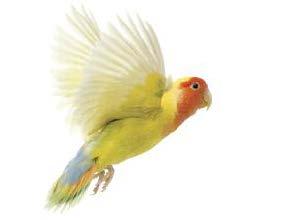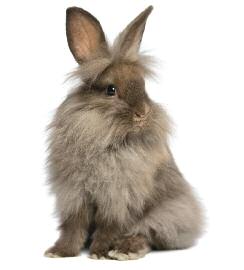Unusual pets demand something more than the usual commitment.
Americans love their pets. Pet ownership in the United States has more than tripled since the 1970s—when approximately 67 million households had pets—to 2012, when that figure climbed to 164 million, according to The Humane Society of the United States. Cats remain the most popular pet in the U.S., with Americans owning more than 86 million felines. The number of pet dogs totals more than 78 million. What about the more unusual critters—exotic birds, tropical fish, rabbits, ferrets, and reptiles? We may not hear about them as much or see them featured in pet food commercials, but they have just as devoted a following as our beloved cats and dogs.
If you’re thinking about owning an exotic pet, you need to do your homework. Speak with someone who owns one, or a veterinarian who treats exotic animals. Whether it’s a parrot, a lizard, a rabbit, or a rat, each of them has its quirks and special needs.
It is also important to know state law. In New Jersey, it is unlawful for persons to possess a potentially dangerous species as a pet. Potentially dangerous species include the following orders: Primates; Carnivora (nondomestic dogs and cats, bears); Saura (venomous gila monsters); Serpentes (venomous coral snakes, cobras, vipers, pit vipers); Crocodilia (alligators, crocodiles, gavials); Psittaciformes (ring-necked and monk parakeets); and Rodentia (prairie dogs, ground squirrels). The law makes an exception for zoos and other exhibitors. They may possess these animals upon showing that specific criteria have been met, such as extensive experience in handling and caring for the animal.
“The best advice I can give anyone seeking to own an exotic pet is to research that pet extensively,” says Dr. Abe Van Beveren, a veterinarian who specializes in exotic pet medicine and surgery at Eagle Rock Veterinary Hospital in West Orange. “Are you able to provide the proper environment for your pet? Is it a social animal, such as a ferret, or more solitary, such as a skunk? Are you aware of the time commitment involved?”
People who fail to educate themselves, he adds, are often surprised and annoyed at pet behaviors that are common to a particular species. “Someone will come in and say, ‘My bird is very loud and it’s annoying when I am trying to talk on the phone.’ Well, you bought a macaw, a bird whose call can be heard for miles in the wild. You really need to research a particular pet’s habits to see if they are a good fit for you and your family.”
FOOD FOR THOUGHT
Exotic pet owners should also be aware that the care and feeding of their pets can be costly. Many vets will charge higher fees for exotics. And, many exotics are prone to specific diseases, such as ferrets, which are predisposed to a variety of cancers, the treatment for which can be expensive.
Max Leichman of Montclair worked at an aquarium store called Absolutely Fish when he first became interested in tropical fish and reptiles. He keeps several exotic fish, including dwarf puffers, a rainbow shark, a large corydoras catfish, buffalo heads, and a spiny peacock eel. “The most important thing is to keep the tanks clean,” he says. “I clean the tanks once a month and the filter three weeks after cleaning the tank. I feed my fish twice a day which actually causes them to grow a little more quickly.”

Photo credit: New York Film Academy
Exotic fish are prized for their exquisite beauty and can provide hours of enjoyment, but pet owners need to learn about the proper aquariums, the right kind of food for different types of fish, which fish can co-exist with one another and which cannot, and the types of plants to buy to help control the nitrogen cycle, where toxic compounds are released into the water by waste products produced by the fish. Your $1,000 reef tank could turn into the Arthur Kill if you take your eye off the ball.
Reptiles and amphibians are other popular pet choices but, as with tropical fish, they are not low-maintenance. “Bearded dragons [pogonas] are a best choice for your first-time owner,” Leichman believes. “You do need to stay on top of cleaning their enclosure, misting them at least twice or three times a day to make sure they stay hydrated, have enough food, and that they are eating. You also need to have a heat lamp that stays on around the clock and a light that you leave on during the day for them to bask in.”
Each type of reptile or amphibian has its own particular set of needs when it comes to living space, air temperature, and food. Whiptail lizards, for example, are very active and can cover a lot of space. The larger ones require a 75-gallon aquarium. They also need a basking area in their tank that reaches 110 to 115 degrees Fahrenheit. And, since they’re diurnal (active during the day), it needs full spectrum UVB lighting for 10 to 12 hours each day.

Photo credit: iStockphoto/Thinkstock
WINGING IT
If you are planning to own exotic birds as pets, it pays to have the patience of Saint Francis. Cheryl Silva, a graphic designer who grew up in East Brunswick, has several exotic birds: five parrots—including a lovebird, two cockatiels, a Goffin’s cockatoo and a military macaw—along with two doves.
Many people, she points out, are unaware that parrots need a lot more attention than a cat or a dog. “They need time out of their cages, but you need to parrot-proof your home since they can get into things,” says Silva. “They are intelligent creatures that need stimulation and challenging toys when kept in their enclosures.”
If they are not provided with these things, she adds, they can mutilate themselves or destroy things in your home. Silva advises anyone who is thinking of getting a parrot to read up on them and start with a small one first, such as parakeet or cockatiel. Apartment dwellers should also check their leases to see if there is a pet clause that prohibits noisy birds.
Dan Radzik, a realtor from Metuchen, deals with rare bird rescue. He became interested in parrots when he found his first neglected bird, a timneh, while he was listing a house for sale. He currently has around 35 parrots in his rescue, Lonely Grey Rescue, including a calico macaw, a Solomon Island eclectus, a Congo African grey, a yellow-naped Amazon, a white-bellied caique, a Fischer’s lovebird, and two Moluccan cockatoos. “Everything about owning a parrot is challenging, from learning to read their body language so you don’t get bitten, to getting to know thier likes and dislikes, to maintaining them on a healthy—and often expensive—diet,” he says. “You also need to have the proper lighting system, make sure that your bird receives all of the nutrients and vitamins he needs, continuously replace toys or involve him in activities to keep him stimulated.”
FERRETS & RATS
Tamara von Ouhl-Kremer, a teacher from Red Bank, has been operating a ferret rescue for about 30 years. She currently has 15 ferrets in her rescue, Concerned Ferret Owners. While ferrets can make great pets, she underscores that they are not for everyone. “Ferrets are very social, active animals,” she explains. “Most young ones can play rough, as their skin is tough, but they have to learn that their owner’s skin is not as resilient. They can be rambunctious and get into mischief, opening cabinets, stealing items, and climbing up onto things, but not being able to get down.”

Photo credit: iStockphoto/Thinkstock
They also require a special high-protein diet and their veterinary bills can be expensive, she says, adding that outside play is not recommended for ferrets as they do not like wearing a leash or collar and there is always the possibility of them running off and being attacked by predators.
Mention rats to most people and they will turn up their noses. But they, too, have their fans. Destiny C. Sweet of Phillipsburg thinks they make great pets as they are affectionate and social animals. She currently owns an albino rat, the kind used in many research laboratories, named Clyde and a tan hooded rat called Arthur. She keeps the two separate because of Arthur’s aggressive behavior towards Clyde. Caring for rats, according to Sweet, involves frequent cage and food bowl cleaning. “Lice are also very common in pet rats and they can be difficult to eliminate,” she says. “The best suggestion is to bleach the cage and everything in it and also use a special shampoo to bathe the rats.”
Along with special pellets and lean meats, rats love fruits and vegetables, pasta (including raw pasta), and crackers. Sweet also recommends that you provide them with something to chew on, such as cardboard. “It’s not good to let their teeth grow too long,” she says. “They need to chew to keep their teeth filed.” Rats are prone to an upper respiratory infection called mycoplasma respiratory disease, Sweet adds. Mycoplasma is an organism that rats (and other rodents) are born with that can become activated by stress or environmental factors. It can be controlled with medication, however. Rats kept in cages with wire flooring can also be prone to bumble foot, a bacterial infection caused by an inflammatory reaction on the feet. For this reason, wire flooring is not recommended.
RABBIT ERAS
Jen Holsman of Belleville, a digital image coordinator, has had a fondness for rabbits ever since she was a child. She is the proud owner of Pumpkin Spice, an English Spot rabbit, who “loves playing in her homemade tunnels, romping around the playfully nudging, digging, and doing crazy bunny ‘binkies.’” Binkies refers to the bunny jumping into the air and twisting its head and body in opposite directions before falling back to the ground. It indicates that the rabbit is happy and feeling secure.
Holsman says the single most important thing to know about rabbits is that they are a 10-plus-year commitment and are social creatures. “They need attention and socialization,” she says. “They are also domestic and therefore cannot survive in the wild. Releasing them would be a certain death sentence.”

Photo credit: iStockphoto/Thinkstock
Rabbits need indoor shelter to survive, preferably an exercise pen where they can run, Holsman adds. The good news is that most rabbits, like cats, can be litter-trained. “Interaction is not only important for them emotionally, but the more time you spend with your bunnies, the better you know their behavioral tendencies, making it easier to identify any potential health problems or variations from the norm.”
These animals have extremely sensitive digestive systems and are prone to gastrointestinal stasis, which is essentially a stoppage in their intestinal function. “If your rabbit refuses to eat, drink, or relieve itself, get it to a vet immediately,” she warns. “A few short hours can be the difference between life and death.”
Editor’s Note: A good starting point for information on exotic pets are the various clubs, web sites and social media pages devoted to them, such as NJ Ferret Rescue & Sanctuary, Turtles and Tortoises, Reptilecare, Birdchannel and Fishlore.





